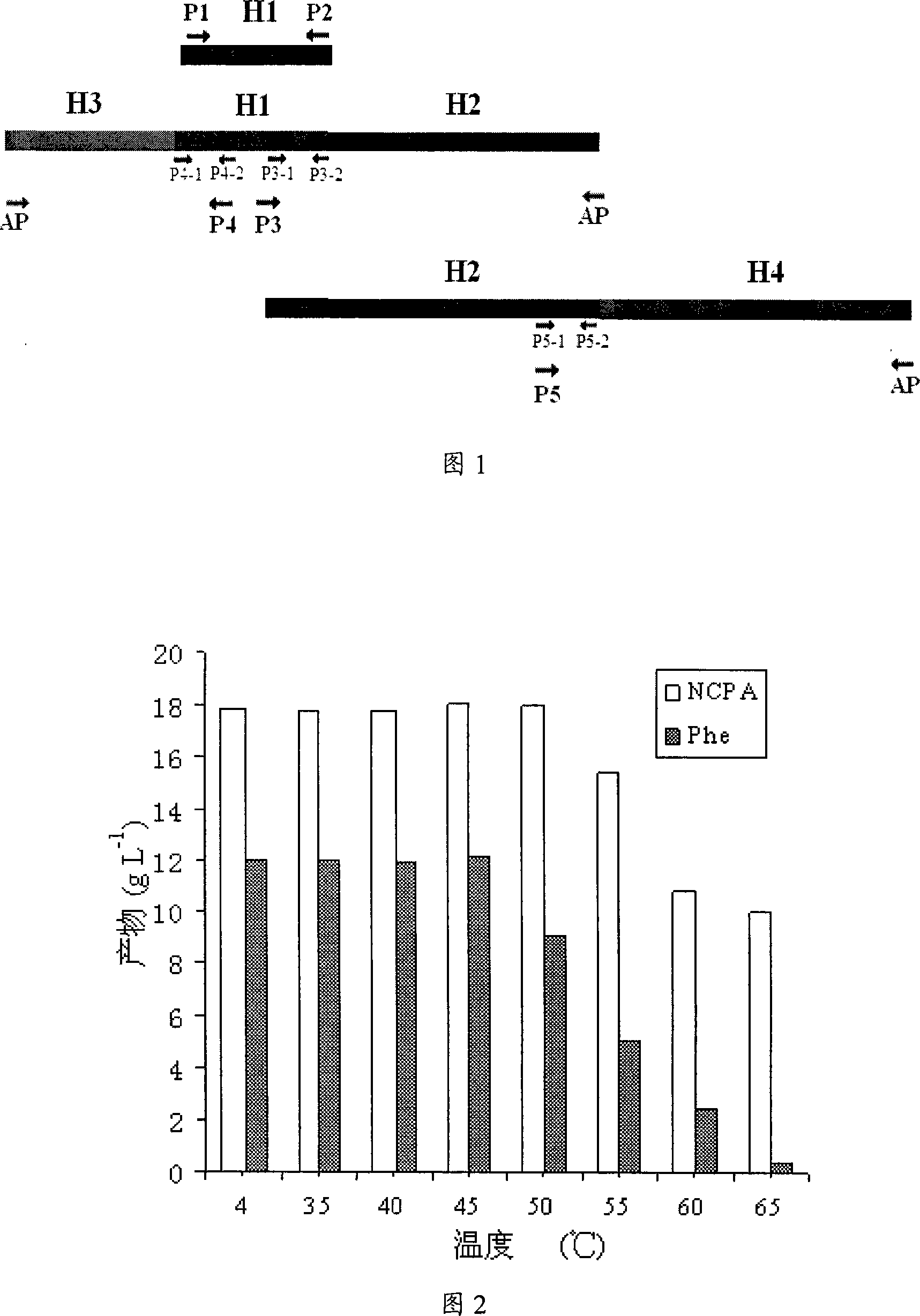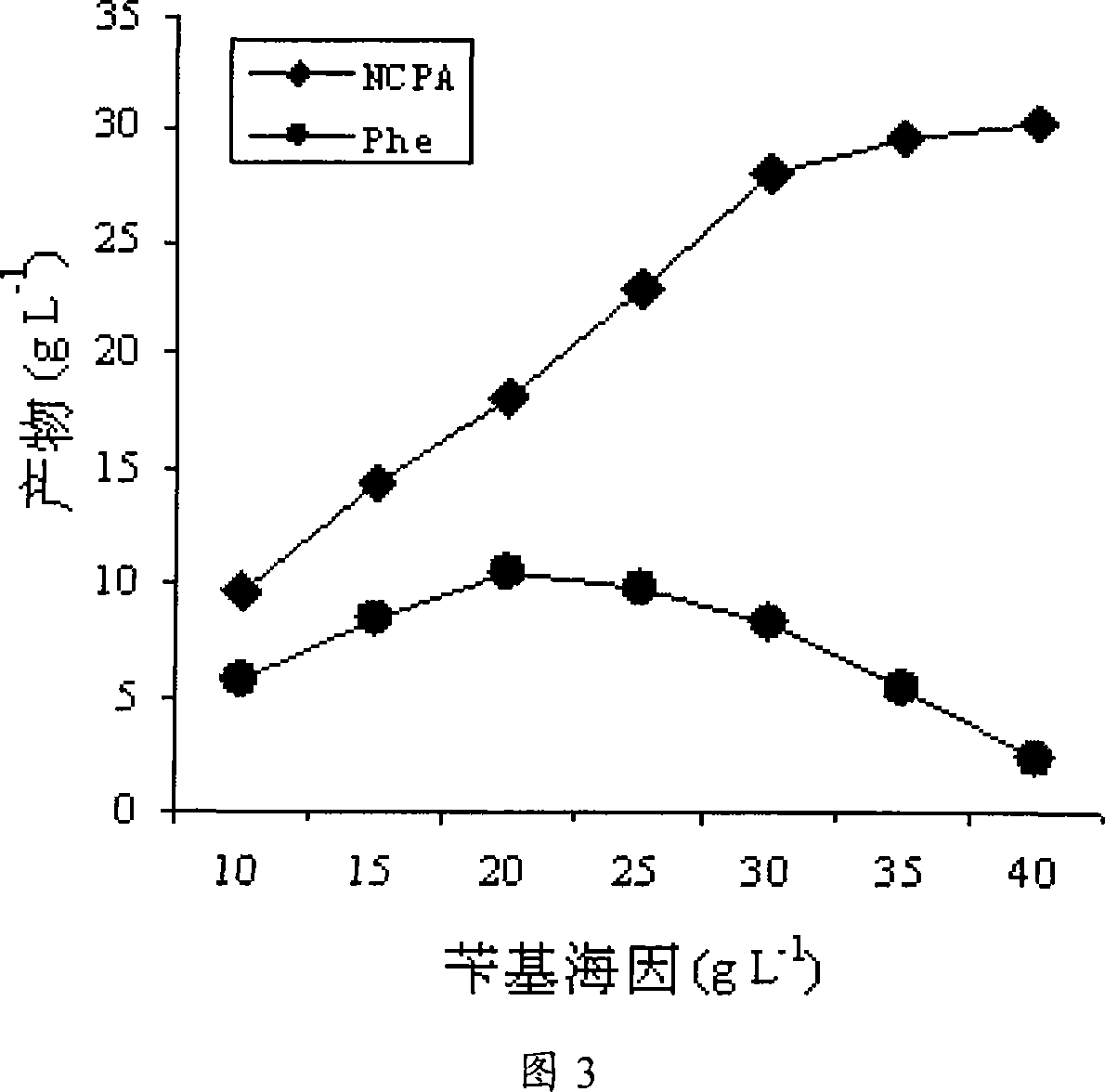Hydantoinase and carbamoyl hydrolase producing strain, bienzyme gene and application thereof for preparing L-amino acid
A hydantoinase and amino acid technology, which is applied in the field of preparing a series of optically pure L-amino acids, can solve the problems of hydantoinase activity and poor thermal stability, and achieve the effects of large-scale production, avoiding inhibition, and good repeatability
- Summary
- Abstract
- Description
- Claims
- Application Information
AI Technical Summary
Problems solved by technology
Method used
Image
Examples
Embodiment 1
[0029] This experiment illustrates the source, screening and identification procedures of strains.
[0030] Screening medium (g L -1): DL-5-substituted hydantoin 20, sucrose 20, potassium dihydrogen phosphate 3, sodium chloride 1, magnesium sulfate 0.25, yeast extract 0.1, pH 7.5;
[0031] Phenol red plate medium (g L -1 ): hydantoin or methylhydantoin 3, peptone 5, yeast extract 3, sodium chloride 3, phenol red 0.05, agar 20, pH 7.7;
[0032] Fermentation medium (g L -1 ): methylhydantoin 3, sucrose 20, yeast extract 1, sodium chloride 3, corn steep liquor 20mL (dry weight about 4g), potassium dihydrogen phosphate 3, magnesium sulfate 0.25, pH 7.5;
[0033] Broth plate medium (g L -1 ): peptone 10, beef extract 5, sodium chloride 5, agar 20, pH 7.5.
[0034] Primary screening:
[0035] About 1,500 soil samples were collected from nature, and about 1 g of each of 3 to 4 kinds of soil samples was added to a test tube filled with 10 mL of screening medium. -1 After three ...
Embodiment 2
[0041] This experiment illustrates the biological properties of Bacillus fordii MH602.
[0042] The present invention identifies the biological characteristics of Bacillus fordii MH602, which is Gram-positive bacteria with spore formation. After growing in the broth plate medium for 16 hours, the colony size is 2-2.5mm, the growth temperature range is 40-55°C, the optimum temperature is 45°C, the growth pH is 6.5-8.5, and the optimum pH is 7.5. Physiological and biochemical manifestations include positive peroxidase test and growth under oxygen conditions.
Embodiment 3
[0044] This experiment illustrates the isolation and cloning procedures of hydantoinase and L-N-carbamoylase genes.
[0045] Total DNA was extracted by the phenol-chloroform method. According to the sequence homology of hydantoinase gene, degenerate primers were designed to amplify the partial sequence of hydantoinase gene, and its flanking sequence was further amplified by genome walking method. The coding sequences of key enzymes hydantoinase and L-N-carbamyl hydrolase were obtained. The PCR fragment containing the mature enzyme coding sequence was recovered by electrophoresis and cloned into the pMD1 8-T vector for sequence analysis. The results showed that this fragment has a full-length reading frame of 1428bp and 1242bp, and the number of amino acids encoding mature hydantoinase and carbamoylase is 474 and 412, respectively. Its amplification process is shown in Figure 1.
[0046] Amplification primers for partial hydantoinase gene fragment H1
[0047] According to t...
PUM
 Login to View More
Login to View More Abstract
Description
Claims
Application Information
 Login to View More
Login to View More - R&D
- Intellectual Property
- Life Sciences
- Materials
- Tech Scout
- Unparalleled Data Quality
- Higher Quality Content
- 60% Fewer Hallucinations
Browse by: Latest US Patents, China's latest patents, Technical Efficacy Thesaurus, Application Domain, Technology Topic, Popular Technical Reports.
© 2025 PatSnap. All rights reserved.Legal|Privacy policy|Modern Slavery Act Transparency Statement|Sitemap|About US| Contact US: help@patsnap.com



